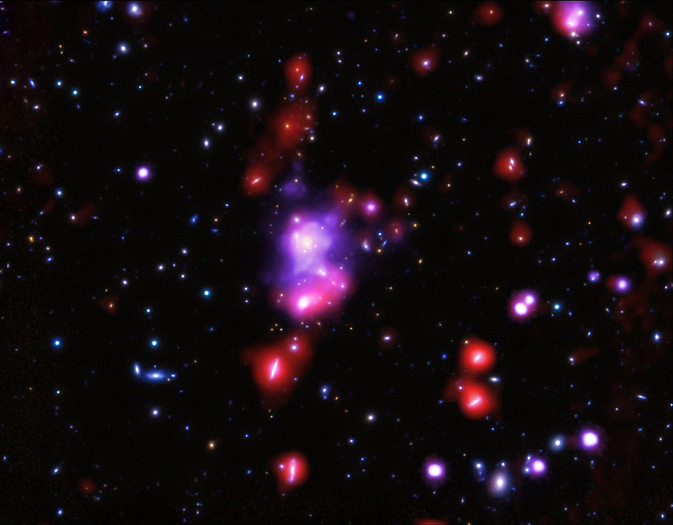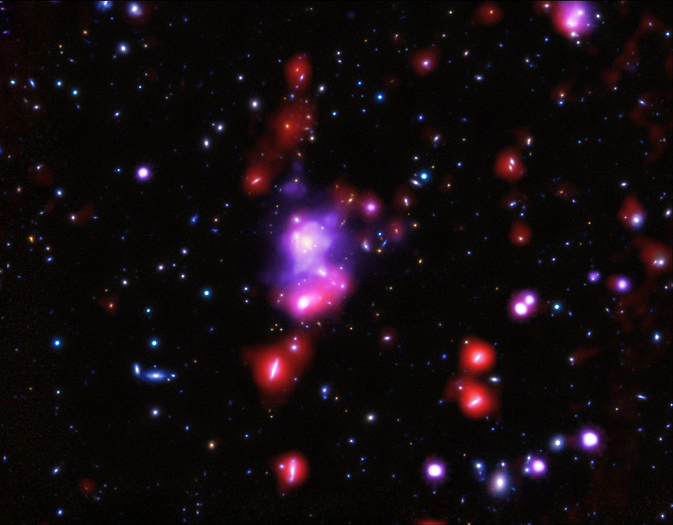

Drawn together by the force of gravity, galaxies are known for their tendency to merge, but they also collect and form galaxy clusters, which generally make up the largest structures in the universe. Intrinsically, these structures can be used for their gravitational lensing capabilities, but more than that, they can shed light on the universe’s greatest mysteries (like dark matter).
Galaxy clusters also make a great subject for remarkably beautiful pictures. This is one galaxy cluster, dubbed XDCP J0044.0-2033, seen at infrared, x-ray and optical wavelengths. Each wavelength tells us something important about the cluster, which has been given the affectionate nickname ‘Gioiello.’ Optical data (taken by the Subaru telescope in Hawaii) shows the galaxies themselves (in red, green and blue); The x-ray data (from Chandra) shows the bridges of superheated gas that separate the galaxies (in purple); and the infrared data is used to illuminate the red halos surrounding certain galaxies (from Hershel).
When compiled, all of this data can ultimately be used to derive certain properties of the cluster. They determined that overall, Gioiello — one of the most massive (known) galaxy clusters in the universe — contains the mass of approximately 400 TRILLION Suns, all contained throughout just 6.2 million light-years. At roughly 800 million years old, it’s also one of the youngest clusters (our own galaxy is about 18 times older, or 13.4 billion years in age), and one of the most distant (it lurks about 9.5 billion light-years from Earth in the Cetus constellation)).
NASA notes that,
“Finding this enormous galaxy cluster at this early epoch means that there could be more out there,” said Paolo Tozzi of the National Institute for Astrophysics (INAF) in Florence, Italy, who led the new study. “This kind of information could have an impact on our understanding of how the large scale structure of the Universe formed and evolved.”
Previously, astronomers had found an enormous galaxy cluster, known as “El Gordo,” at a distance of 7 billion light years away and a few other large, distant clusters. According to the best current model for how the Universe evolved, there is a low chance of finding clusters as massive as the Gioiello Cluster and El Gordo. The new findings suggest that there might be problems with the theory, and are enticing astronomers to look for other distant and massive clusters.
“The hint that there might be problems with the standard model of cosmology is interesting,” said co-author James Jee of the University of California in Davis, “but we need bigger and deeper samples of clusters before we can tell if there’s a real problem.”
[via NASA]
Above all else, this galaxy cluster will help us better understand the way in which clusters evolve over time. Also interesting is the fact that astronomers have noted that there is, what appears to be, ‘uneven structures” in the gas.
See a larger image here.